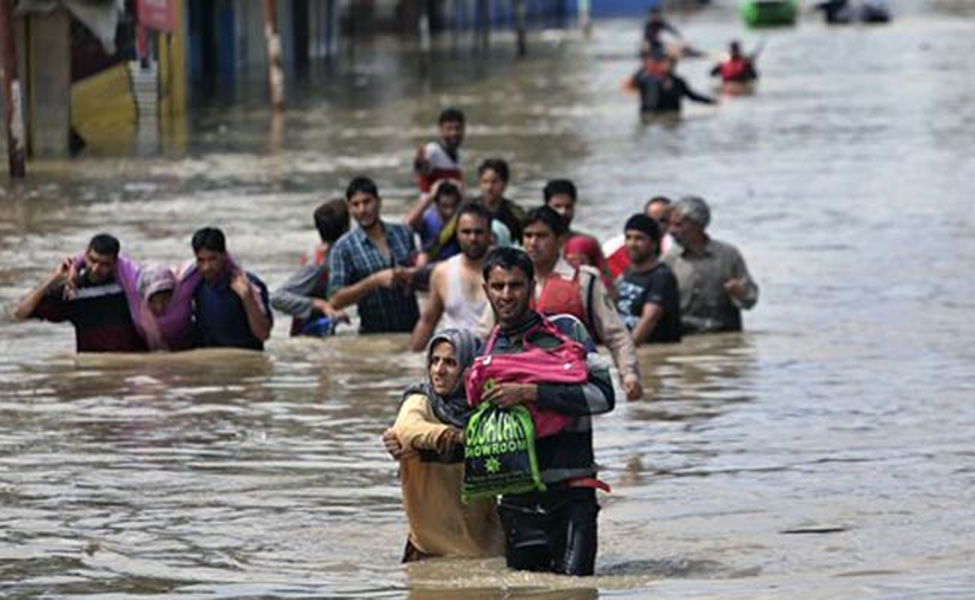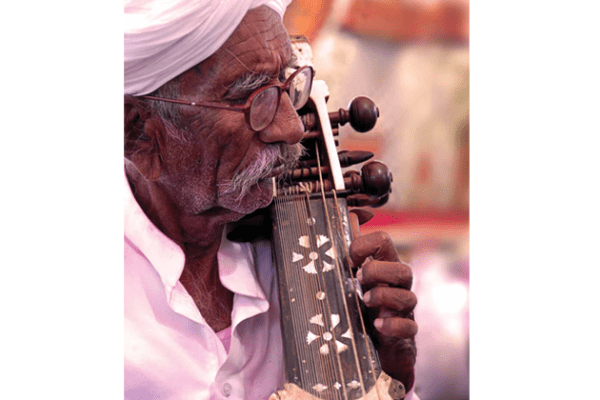While the floods in Kashmir wreak havoc in the state, citizen groups and Kashmiri origin students from across the country take over the rescue duties from the army and government, reports Basharat Ali.
Kashmir is witnessing the worst floods in its living memory. It stopped raining a while ago, but people are still stranded in the waters. Large chunks of the summer capital-Srinagar and the district, Islamabad, are submerged and the surface water is not receding at the pace it usually does.
In 2010, the State’s Flood Control Ministry had warned that Srinagar could face a major flood in next five years. The Ministry’s had assessed that most parts of Kashmir from Khannabal in Anantnag to Khadinyar in Baramulla are likely to be hit by floods in five years. Back then, the Flood Control department formulated a Rs-2200 crore project to set up the required infrastructure in anticipation of the life taking floods. Of Rs.2200 crore, the government sought Rs.500 crore from the Centre “on immediate basis” so that the basic minimum infrastructure is put in place. “But the State didn’t take up the proposal with the Centre since then in an active manner,” an official was quoted saying back then.
Apart from such neglect, many other factors are responsible for the present humanitarian crisis-mainly the unmindful construction of railways and highways. Such constructions have caused huge depressions. The new four lane highway project has choked all traditional sewage system, blocking all the outlets. The railway line which runs across the valley has been constructed by razing down hillocks, turning the line into a steady embankment which keeps the level of surface water static. Also, the residential colonies which have come up around major wetlands like Hokarsar have a massive contribution in creating this alarming situation.
Kashmir government, however, seems to be doing nothing much to control the situation. Locals have taken the task in their hand. Armies are built to save territories and the areas they occupy. That is exactly what Indian Army is doing in Kashmir, which is caught in nature’s fury: a flood which has already consumed more than 150 lives and caused unimaginable damages to property and agriculture. The recurring images flashing across news channels are showing Indian army involved in “rescue” is propaganda and public relations exercise. In reality, they seem to be cherry picking influential people who come to Delhi and seek help for those they left behind. That any rescue or evacuation is done by army is actually a farce and if at all it is true, then it is a tragedy.
With only six boats in entire Srinagar, the armies seem to be evacuating the officers and their families to safe locations instead. The rescue operations for the last three days have been conducted by young self-help voluntary groups across Kashmir. In Islamabad, South-Kashmir, which is worst hit, a group of young men have been involved in rescue operations, after taking their own families to safer locations. Since all communications to that part of Kashmir are down, last conversations with the flood hit areas suggest that they have formed teams on village level. The state administration is non-existent and help is coming from people themselves.
In Srinagar, which remains inundated even after three days, young people from areas unaffected by the floods have managed whatever they could do to recue people. The migrant labourers from different parts of India have been rescued from their rented homes and provided food and shelter in safer locations. Tourists caught in hotels have also been rescued. From areas like Bemina, Rajbagh, Indra Nagar, Humhama, Gogji Bagh, Habba Kadal and other places in the city, all rescue and evacuation is done by the volunteers and the media.
The internet working on a few mobile networks has been used by these volunteer groups to spread SOS messages and reach to the people in need. They are constantly updating the list of people rescued through a Google document to keep the Kashmiri diaspora updated. Kashmiri students in Delhi, Pune, and Mumbai have responded to the crisis maturely and so far, do not seem to have succumbed to any political compromise. They have been collecting funds and arranging for logistical support. In the outskirts of the cities, people have arranged for the shelter and food on a large scale. Transport service in the form of trucks and tractors has also been provided locally. Truck and tractor owners from some parts of Baramulla have deployed their vehicles for evacuation.
The government administration in Kashmir seems to have has miserably failed. Highlighting this is necessary because the government is using the media, broadcast, print and social networking to take credit for what locals are doing. This supposition is vindicated by the fact that Chief Minister Omar Abdullah glorified in Economic Times headline (As Jammu and Kashmir battles flood, Omar Abdullah leads from the front), has called for timely assembly elections in the state.
The one thousand crore rupees relief announced by Indian Prime Minister Narendra Modi, calling the floods as a natural disaster, is a diplomatically loaded political gesture. At this moment in time, no amount of money can help in evacuation and rehabilitation of people to safer places. If one were to take a larger leap and compare the situation with 2013 Uttarakhand floods (though that would be politically incorrect but to bust the myth of Modi Sarkar, it becomes necessary) where Narendra Modi’s two day visit was said to have rescued 15,000 people, his visit to Kashmir has only wasted time and money.


